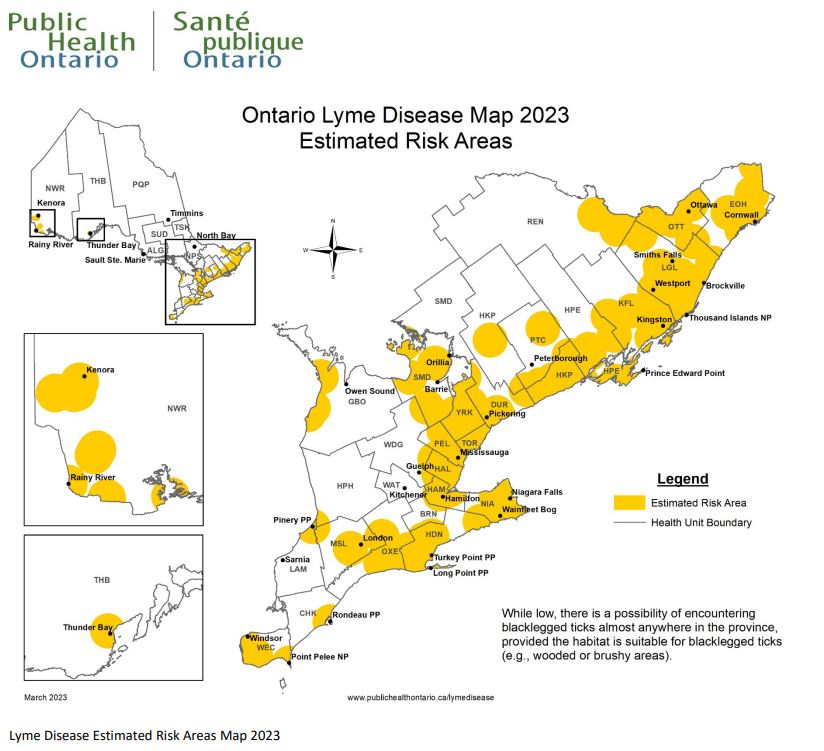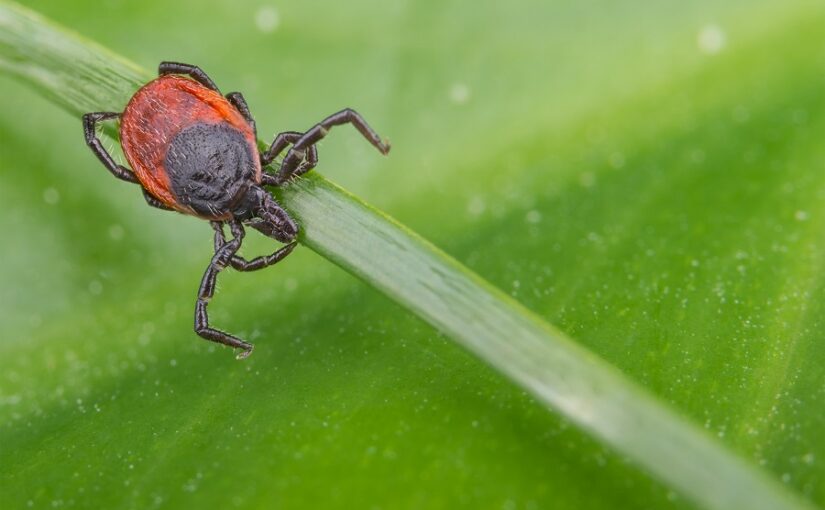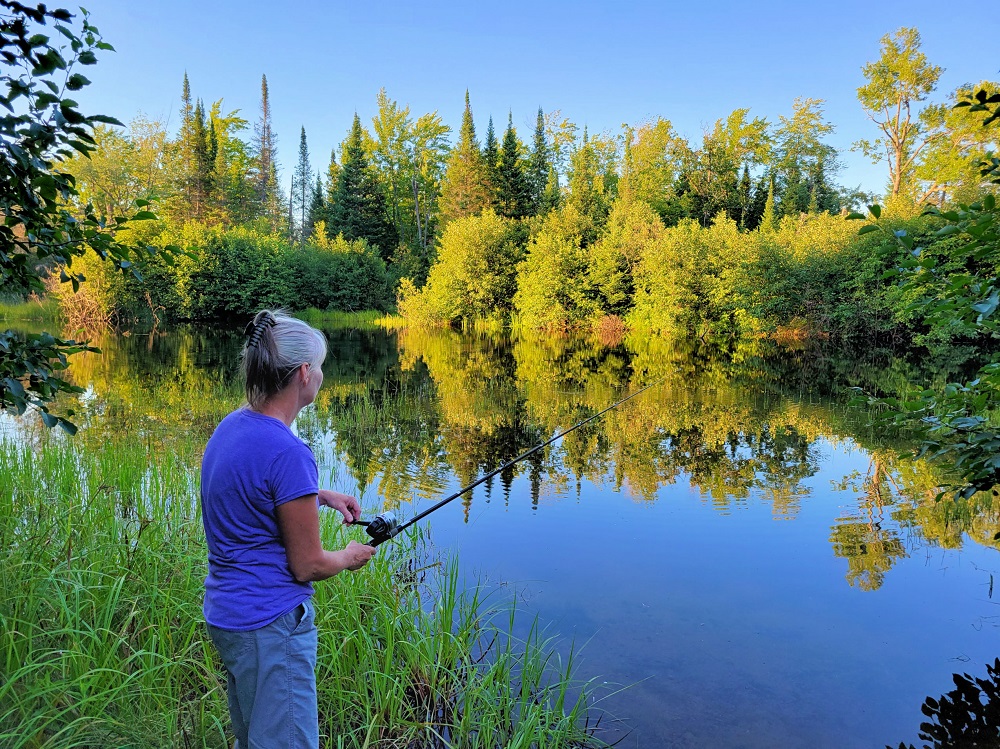Do ticks and Lyme disease make you wary of going outdoors?
Make sure you know how to protect yourself, pets, and your loved ones when you head out on an adventure.
The most effective way to prevent Lyme and other tick-borne diseases is to prevent tick bites.
What is Lyme disease?
Ontarians are fortunate to have an abundance of wilderness that provides us with ample opportunity to enjoy the outdoors. But one thing to keep in mind when outside—especially in wooded areas and those with tall grasses, bushes and shrubs—is Lyme disease.
Lyme disease is spread to humans through the bite of an infected Blacklegged Tick. Health officials are seeing an increase in the number of cases in the province each year.
This is partly due to an increase and expansion of Blacklegged Tick populations to new areas of the province.
One of the symptoms of Lyme disease is an expanding skin rash, which can appear between 3-30 days after a bite. However, many people never get or see a rash. This can be very problematic as missing treatment in the first stage of the disease will push you into the second stage.
In stage 2 and 3, other symptoms may develop including fever, chills, headache, fatigue, muscle and joint aches, problems with your heartbeat, breathing, balance and short-term memory. In rare cases, Lyme disease may result in death.
It is important to see your health care provider as early as possible if you have symptoms or if you feel unwell in the weeks following a tick bite. The earlier treatment is received the better.
How do people contract Lyme disease?
Blacklegged Ticks cannot fly. Ticks settle in trees, brushy areas, and high grass. The tick waits in a crouched position with arms stretched outward. The tick will hook on to a passing person or animal as it crosses their path.
Ticks are known to feed on migratory birds and can be carried throughout the province.
Lyme disease is not transmitted from person-to-person; however, dogs and cats can carry Blacklegged Ticks inside and place families at risk of being bitten.
Check your pets for ticks daily and talk with your vet about keeping your pet protected from ticks. Remember, that you are at risk when spending time in the same environments.
When you’re out in tick habitat, protect yourself by taking these precautions:
- Wear light-coloured clothing. It makes ticks easier to spot
- Wear closed footwear and socks and a long-sleeved shirt tucked into long pants. Tuck your pants into your socks
- Use a tick repellent that has DEET or icaridin on your clothes and exposed skin (be sure to follow the manufacturer’s directions)
- Search your clothes and body for ticks at least once a day, paying special attention to areas such as the groin, belly button, armpits, scalp, and behind ears and knees.
- Use a mirror to check the back of your body or have someone else check for you. Don’t forget to tick check children in your care
- Place outdoor clothing through the dryer cycle for 60 minutes on high heat before washing to kill any ticks that may be hard to see.
What if I find a tick?
- Use fine-tipped tweezers to grasp the tick as close to the skin as possible
- Pull the tick out slowly with even pressure to ensure mouth parts are removed and body is not crushed
- Wash area with soap and warm water
DO NOT
- Grasp around bloated belly and squeeze the tick
- Use a match, heat, or chemicals to try and remove the tick
- Twist the tick when pulling it out
Current Lyme disease risk areas in Ontario
While not all Blacklegged Ticks can cause Lyme disease, there has been an increase in the number of areas in Ontario where blacklegged ticks have been identified or are known to exist.
Ticks infected with Lyme and other diseases are continuing to spread as the climate in Canada warms. Ticks are moving more North with the help of migratory birds and their ability to survive the mild winters.
For more details, review the Lyme disease risk area map below:

While the probability is low, it is possible to encounter an infected tick almost anywhere in the province.
For more information please consult the Public Health Ontario or the Ontario Ministry of Health.



